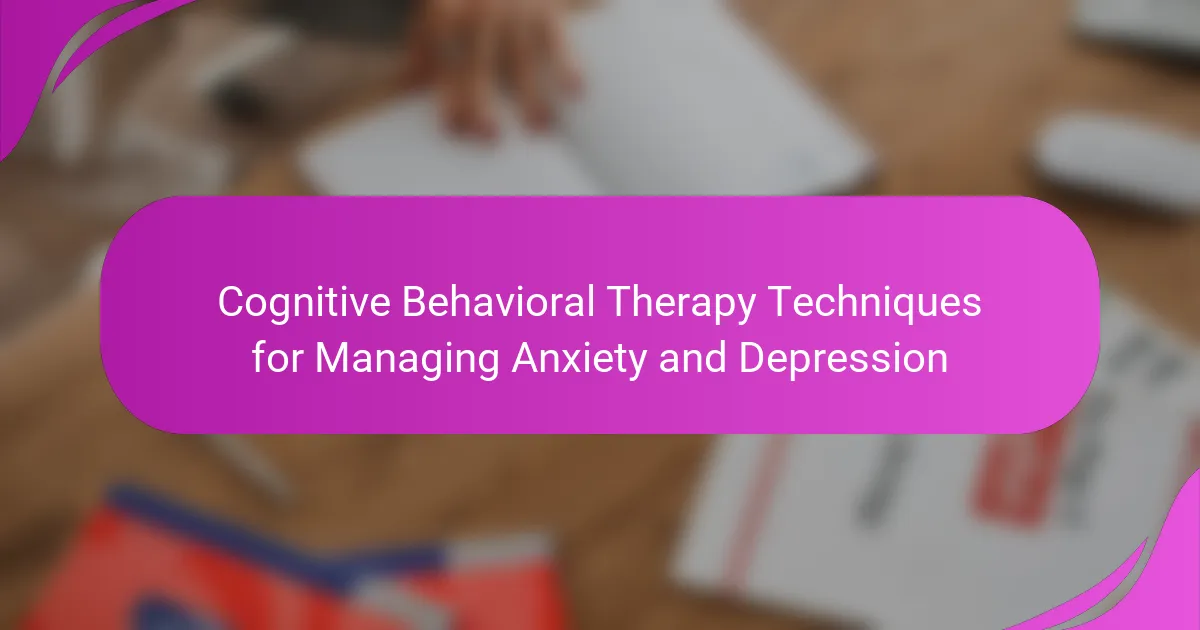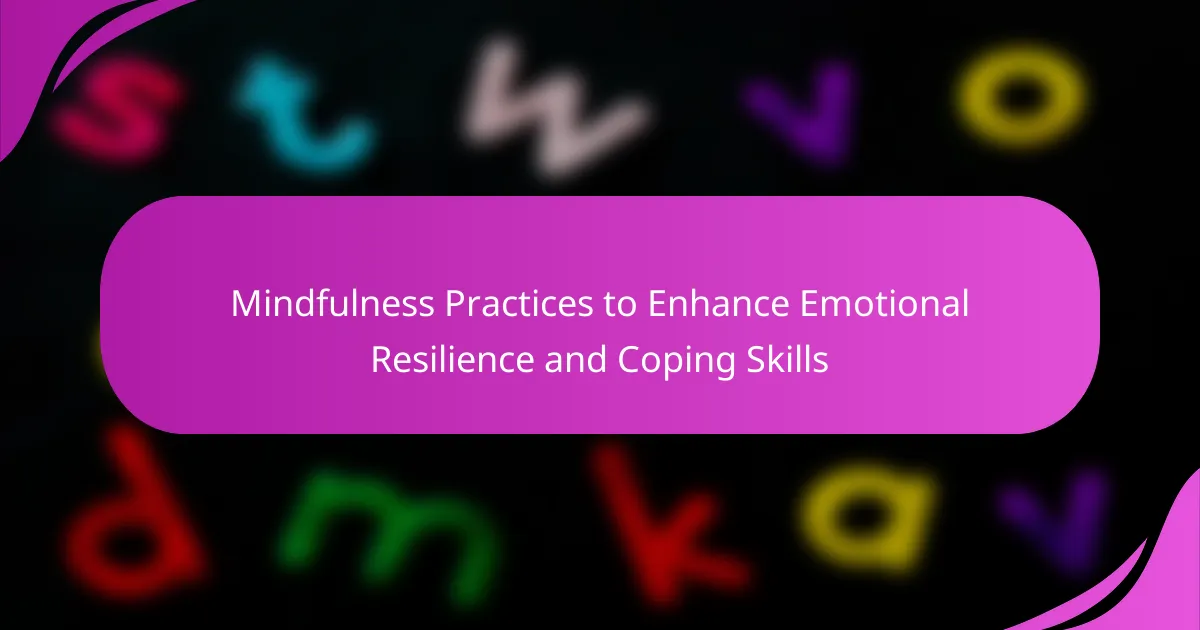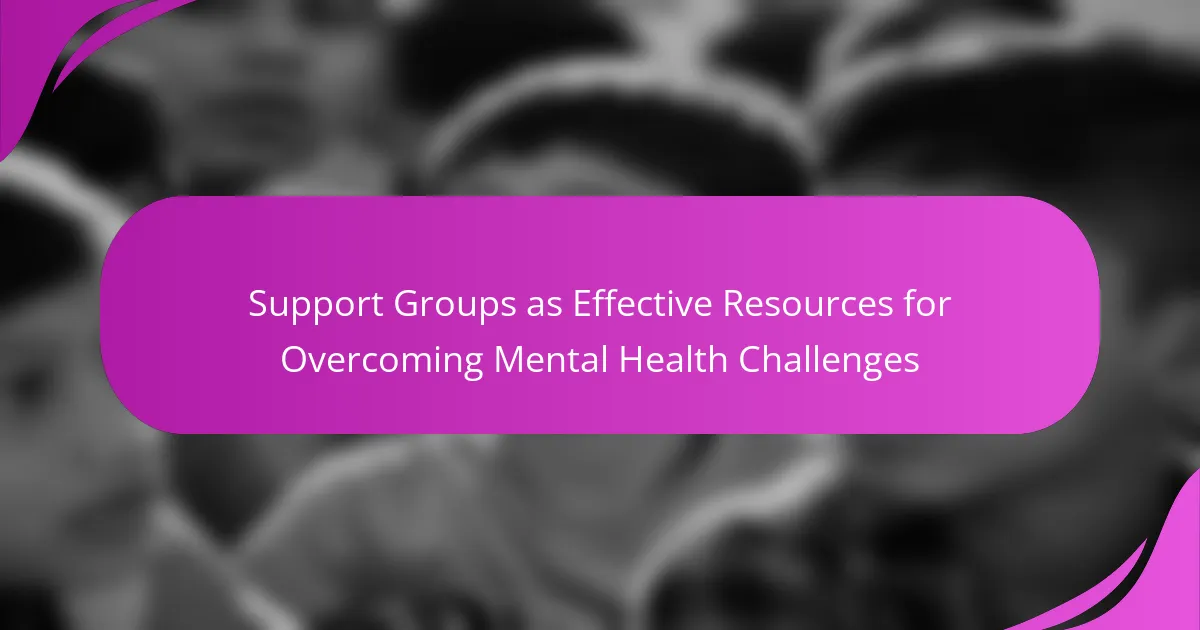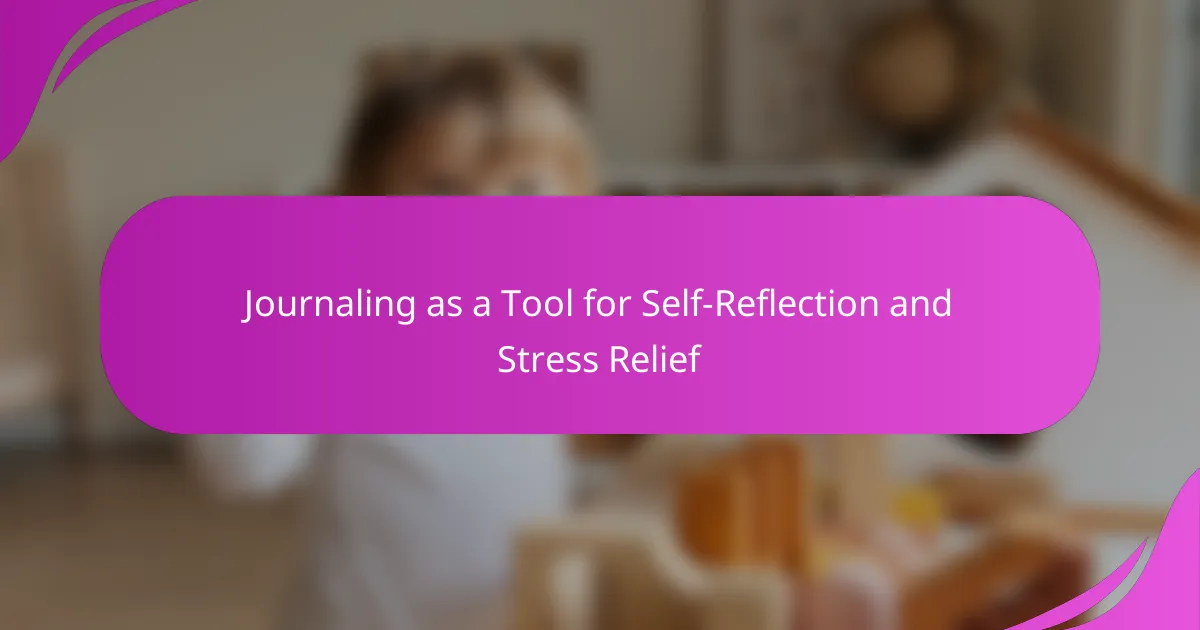Breathing exercises significantly reduce stress and improve mental well-being. They promote relaxation, lower cortisol levels, and enhance emotional resilience. Effective techniques include deep breathing, box breathing, and diaphragmatic breathing. Cultural practices shape these methods, providing diverse approaches to stress management and emotional regulation.
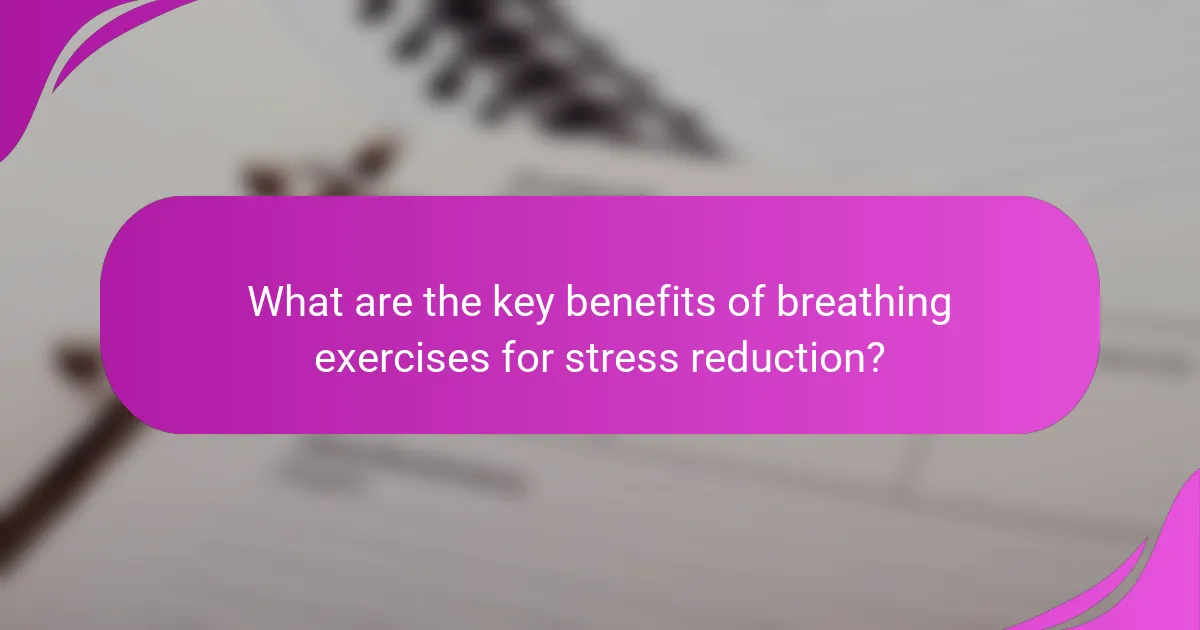
What are the key benefits of breathing exercises for stress reduction?
Breathing exercises significantly reduce stress and enhance mental well-being. They promote relaxation, lower cortisol levels, and improve focus. Regular practice can lead to better emotional regulation and resilience against anxiety. Studies show that deep breathing can decrease heart rate and blood pressure, fostering a sense of calm.
How do breathing exercises improve mental well-being?
Breathing exercises significantly enhance mental well-being by reducing stress and promoting relaxation. These techniques activate the body’s relaxation response, lowering cortisol levels and improving mood. Studies show that regular practice can lead to decreased anxiety and improved focus. Practicing deep breathing for just a few minutes daily can create lasting positive effects on mental health.
What physiological changes occur during breathing exercises?
Breathing exercises lead to several physiological changes that enhance mental well-being. These include decreased heart rate, reduced blood pressure, and improved oxygenation of the blood. As a result, stress levels drop, promoting relaxation and clarity of thought. Additionally, these exercises can stimulate the parasympathetic nervous system, which further supports a state of calm and focus.
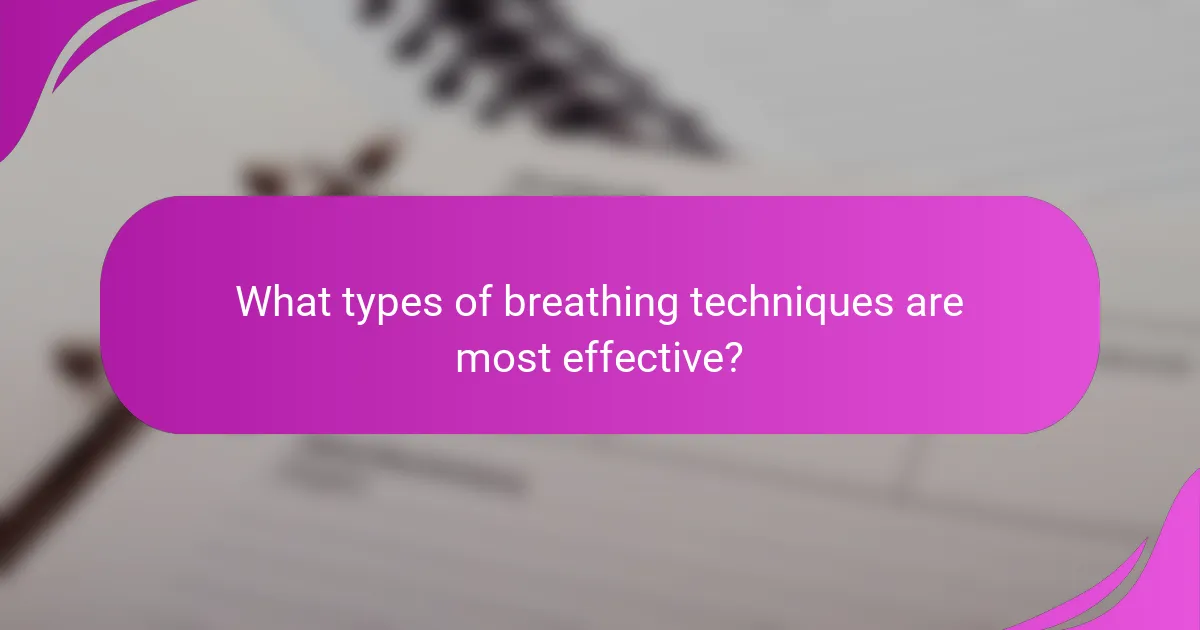
What types of breathing techniques are most effective?
Deep breathing, box breathing, and diaphragmatic breathing are among the most effective techniques. These methods reduce stress and promote mental well-being through controlled breath patterns.
Deep breathing focuses on slow, intentional inhalations and exhalations, enhancing oxygen flow and calming the nervous system. Box breathing involves inhaling, holding, exhaling, and holding again for equal counts, creating a rhythm that stabilizes emotions. Diaphragmatic breathing emphasizes using the diaphragm for deeper breaths, which can lower heart rate and decrease anxiety.
Research shows that these techniques can significantly lower cortisol levels, making them valuable tools for stress management and emotional regulation.
What is diaphragmatic breathing and how does it work?
Diaphragmatic breathing is a technique that engages the diaphragm, promoting deeper breaths. This method reduces stress and enhances mental well-being by activating the body’s relaxation response. When practiced, it lowers heart rate and blood pressure, resulting in a calming effect. Regular practice can improve lung capacity and overall respiratory efficiency, contributing to better emotional regulation.
How to practice diaphragmatic breathing?
To practice diaphragmatic breathing, follow these steps. Sit or lie down comfortably. Place one hand on your chest and the other on your abdomen. Inhale deeply through your nose, allowing your diaphragm to expand and your belly to rise. Exhale slowly through your mouth, feeling your abdomen fall. Repeat this process for several minutes. This technique enhances oxygen intake, reduces stress, and promotes relaxation. Regular practice can significantly improve mental well-being.
What is box breathing and its benefits?
Box breathing is a structured breathing technique that promotes relaxation and mental clarity. It involves inhaling, holding, exhaling, and holding again for equal counts, typically four seconds each.
The benefits of box breathing include reduced stress, improved focus, and enhanced emotional regulation. This method activates the parasympathetic nervous system, leading to a calmer state. Studies show it can lower anxiety levels and improve overall mental well-being. Regular practice can also enhance resilience against stressors, making it a valuable tool for anyone seeking to improve their mental health.
How to implement box breathing in daily routines?
To implement box breathing in daily routines, practice the technique four times a day for five minutes each. Start by inhaling for four counts, holding for four counts, exhaling for four counts, and holding again for four counts. This structured approach helps regulate stress and enhances mental clarity. Incorporate box breathing during breaks, before meetings, or as part of your morning routine to maximize its benefits. Regular practice can lead to improved emotional resilience and overall mental well-being.
What is 4-7-8 breathing and how can it help?
4-7-8 breathing is a technique that helps reduce stress and improve mental well-being by promoting relaxation. This method involves inhaling for four seconds, holding the breath for seven seconds, and exhaling for eight seconds. As a result, it activates the body’s relaxation response, lowering heart rate and reducing anxiety. Practicing this technique regularly can enhance focus and emotional regulation, making it a beneficial tool for mental health.
Step-by-step guide to 4-7-8 breathing?
The 4-7-8 breathing technique is a simple method to reduce stress and enhance mental well-being. Follow these steps:
1. Sit comfortably with your back straight.
2. Close your eyes and inhale quietly through your nose for a count of 4.
3. Hold your breath for a count of 7.
4. Exhale completely through your mouth, making a whoosh sound for a count of 8.
5. Repeat the cycle for four breaths.
This technique promotes relaxation by regulating breath, which can lower anxiety and improve focus.

How do cultural practices influence breathing exercises?
Cultural practices significantly shape breathing exercises, influencing their techniques and purposes. For instance, yoga traditions emphasize mindfulness and spiritual connection, while Chinese practices like Qigong focus on energy flow and balance. These cultural contexts affect the styles of breathing, such as diaphragmatic versus rapid chest breathing, and their intended effects on stress reduction and mental well-being. Additionally, unique cultural rituals may incorporate specific mantras or movements, enhancing the overall experience and effectiveness of the exercises.
What regional variations exist in breathing techniques?
Breathing techniques vary regionally, reflecting cultural practices and environmental influences. For example, Pranayama from India emphasizes breath control for spiritual and health benefits. In contrast, the Buteyko method from Russia focuses on nasal breathing to manage asthma and anxiety. Additionally, Chinese Qigong integrates breath with movement for holistic wellness. Each technique showcases unique attributes in stress reduction and mental well-being.
How does traditional medicine incorporate breathing exercises?
Traditional medicine incorporates breathing exercises as a method to enhance mental well-being and reduce stress. These practices, often rooted in ancient traditions, focus on controlled breathing techniques that promote relaxation and mindfulness. For example, techniques like pranayama in yoga emphasize breath control to balance energy and calm the mind. Research supports that regular practice can lower anxiety levels and improve overall mental health, making it a valuable tool in holistic health approaches.
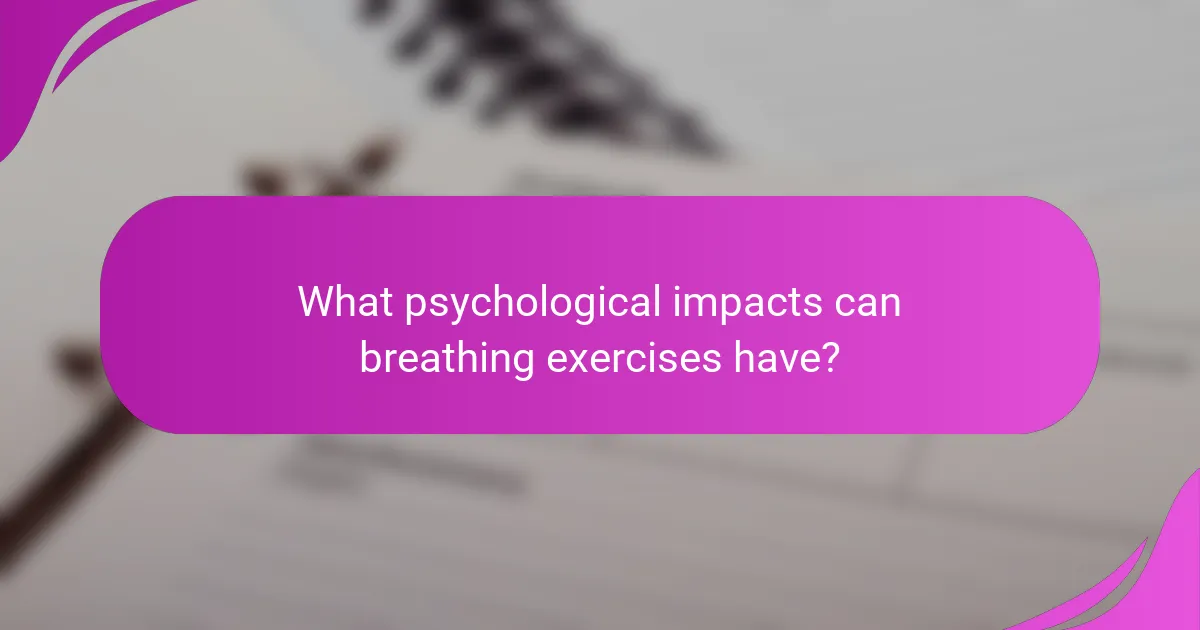
What psychological impacts can breathing exercises have?
Breathing exercises can significantly reduce stress and enhance mental well-being. They promote relaxation, decrease anxiety, and improve focus. Research indicates that deep breathing activates the parasympathetic nervous system, leading to lower cortisol levels. This physiological response fosters a calmer state of mind, which can help mitigate symptoms of depression and anxiety. Regular practice can also enhance emotional resilience, providing a unique attribute that differentiates it from other stress management techniques. As a result, individuals report improved mood and overall mental clarity.
Can breathing exercises help with anxiety and depression?
Breathing exercises can significantly help reduce anxiety and depression. Research shows that deep, controlled breathing activates the body’s relaxation response, lowering stress levels.
These exercises enhance oxygen flow, promoting mental clarity and emotional balance. For example, practicing diaphragmatic breathing for just five minutes can decrease heart rate and cortisol levels, contributing to improved mental well-being.
Incorporating breathing techniques into daily routines can serve as a unique strategy for managing anxiety and depression. Regular practice fosters resilience against stressors, ultimately supporting mental health.
What role does breath control play in emotional regulation?
Breath control significantly aids emotional regulation by promoting relaxation and reducing stress. Controlled breathing activates the parasympathetic nervous system, which calms the body and mind. This process enhances mental well-being by lowering anxiety levels and improving mood. Techniques like deep abdominal breathing can reduce cortisol, the stress hormone, thereby fostering emotional stability. Regular practice of breathing exercises can lead to long-term improvements in emotional resilience.
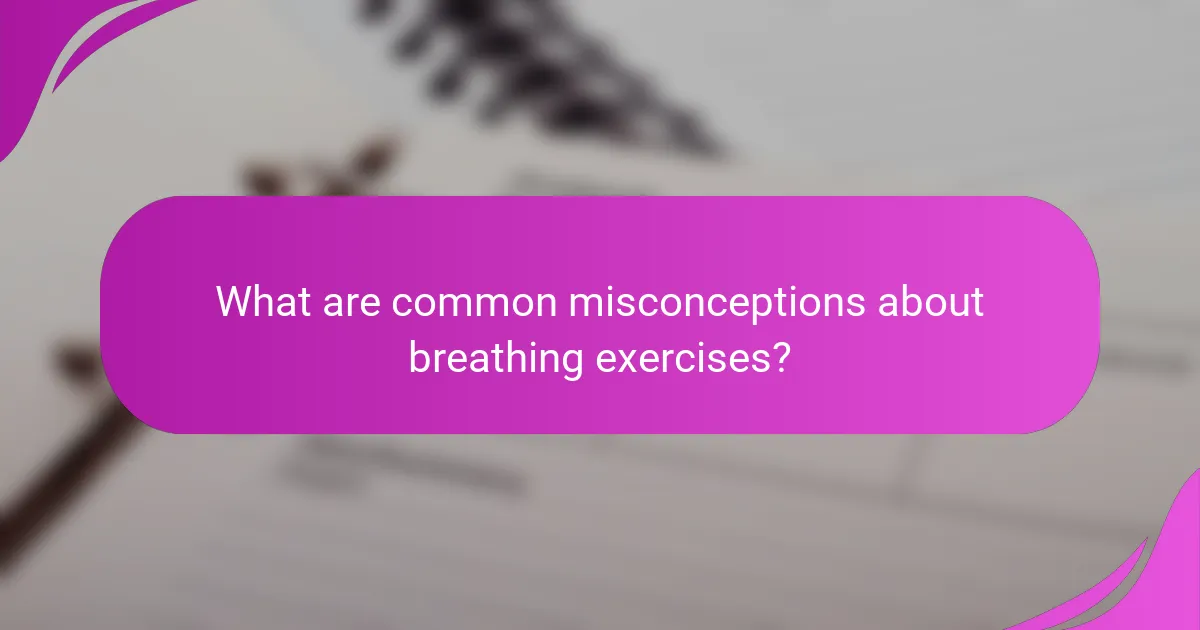
What are common misconceptions about breathing exercises?
Many believe breathing exercises are simple and ineffective, but they significantly enhance stress relief and mental well-being. Misconceptions include the idea that these exercises require extensive time or are only for those with anxiety disorders. In reality, even a few minutes daily can yield benefits. Another common myth is that breathing techniques are one-size-fits-all; however, individual needs vary, and personalized approaches often work best. Lastly, some think that breathing exercises are only about inhaling and exhaling, while they actually involve techniques like diaphragmatic breathing and paced respiration, which can be tailored for maximum impact.
Why do some people find it difficult to practice breathing exercises?
Some people find it difficult to practice breathing exercises due to anxiety, lack of time, or misconceptions about their effectiveness. Anxiety can create physical tension, making it hard to relax and focus on breathing. Time constraints can lead to prioritizing other activities over self-care practices. Additionally, some individuals may believe breathing exercises are ineffective, resulting in a lack of motivation to engage in them. Understanding these barriers can help in developing strategies to encourage consistent practice for stress reduction and improved mental well-being.
What are the most frequent mistakes made during these exercises?
Common mistakes during breathing exercises include improper posture, shallow breathing, and lack of focus. Many individuals neglect to maintain an upright position, which can hinder airflow. Shallow breathing limits oxygen intake, reducing the exercise’s effectiveness. Additionally, distractions can prevent full engagement, leading to suboptimal results. Practicing mindfulness and ensuring correct technique enhances the benefits of these exercises.
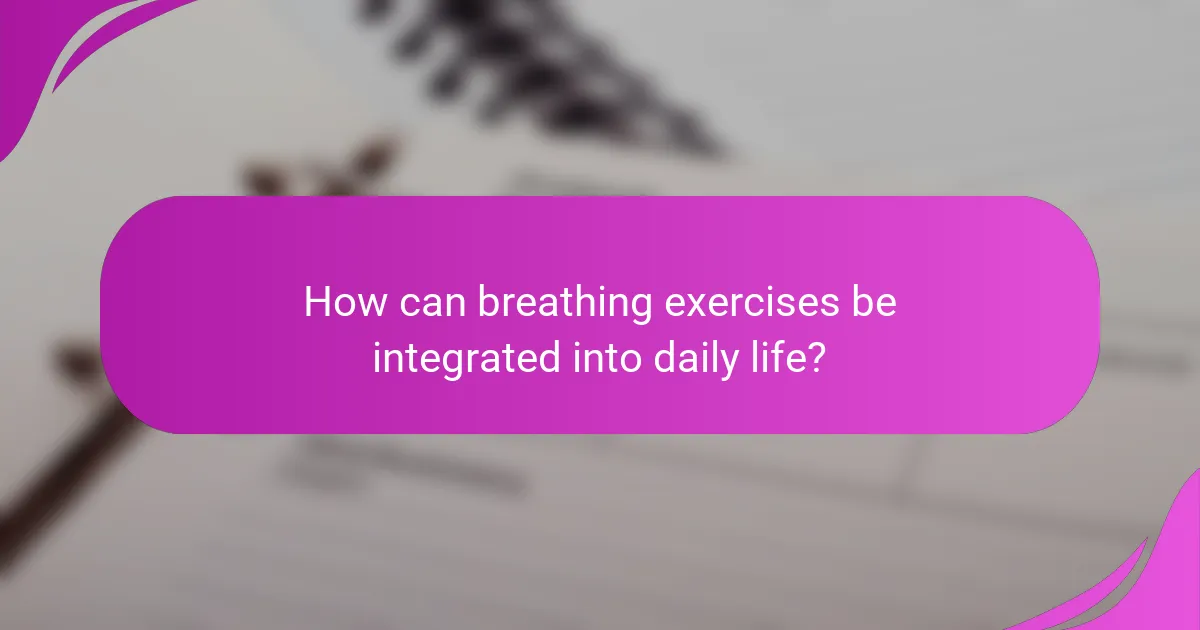
How can breathing exercises be integrated into daily life?
Breathing exercises can be seamlessly integrated into daily life by dedicating a few minutes each day to practice. Start with simple techniques such as deep diaphragmatic breathing or box breathing.
1. Morning Routine: Begin your day with five minutes of focused breathing to set a calm tone.
2. Work Breaks: Use short breaks to practice breathing exercises, reducing stress and enhancing focus.
3. Commute: Incorporate breathing techniques during your travel to promote relaxation.
4. Evening Wind Down: End your day with breathing exercises to prepare for restful sleep.
Consistent practice can significantly improve mental well-being by lowering anxiety levels and enhancing overall mood.
What are some practical tips for incorporating breathing exercises?
Incorporating breathing exercises into daily routines can significantly reduce stress and enhance mental well-being. Start by setting aside a few minutes each day for focused practice.
1. Choose a quiet space to minimize distractions.
2. Begin with deep diaphragmatic breathing, inhaling through the nose for a count of four, holding for four, and exhaling through the mouth for six.
3. Practice mindfulness by concentrating on your breath, observing each inhale and exhale.
4. Use guided breathing apps or videos for structured sessions, especially if new to the practice.
5. Integrate breathing exercises into existing activities, such as during breaks at work or before sleep.
6. Experiment with various techniques like box breathing or 4-7-8 breathing to find what resonates best.
These practical tips can help establish a consistent practice, ultimately leading to improved mental clarity and emotional balance.
How can breathing exercises enhance productivity and focus?
Breathing exercises significantly enhance productivity and focus by reducing stress and improving mental clarity. These techniques promote relaxation, leading to better concentration and decision-making.
Regular practice of deep breathing can lower cortisol levels, which are linked to stress. As a result, individuals often experience increased alertness and creativity. Research indicates that just a few minutes of focused breathing can lead to measurable improvements in cognitive function.
Incorporating breathing exercises into daily routines can create a unique attribute of mental resilience. This practice not only serves immediate needs but also fosters long-term mental well-being.
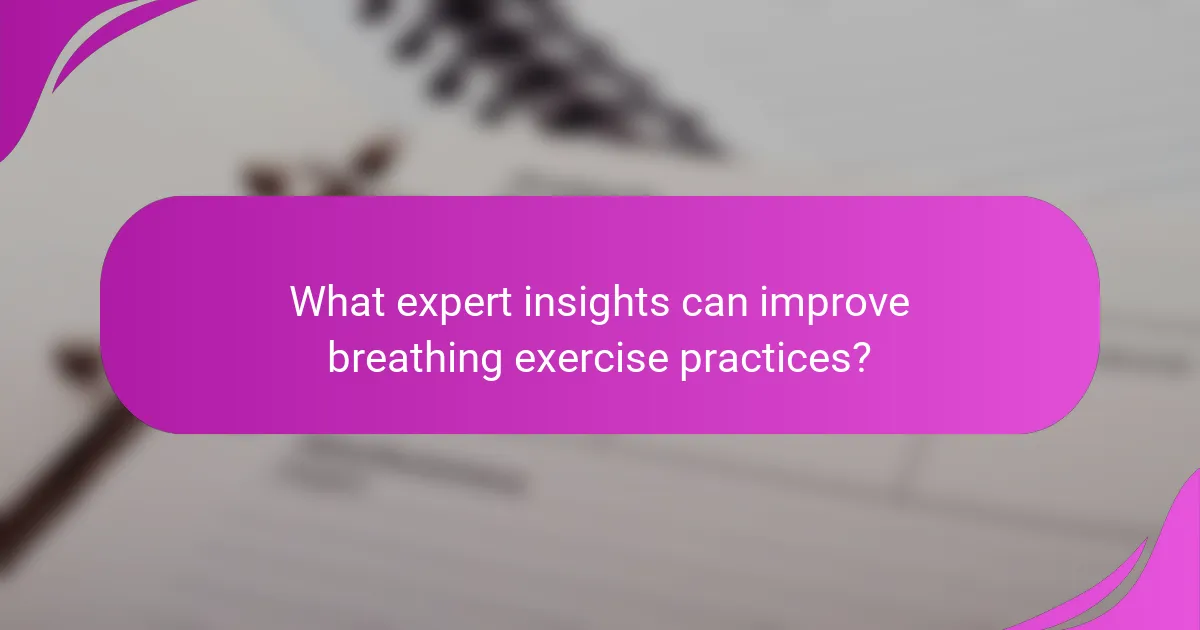
What expert insights can improve breathing exercise practices?
Incorporating expert insights can significantly enhance breathing exercises for stress reduction and mental well-being. Focus on techniques such as diaphragmatic breathing, which engages the diaphragm and promotes relaxation.
Research indicates that practicing controlled breathing for just five minutes can lower cortisol levels, a primary stress hormone. Experts recommend integrating mindfulness into breathing exercises, as this combination fosters greater emotional regulation.
Additionally, varying the duration and frequency of these exercises can lead to improved outcomes. For instance, shorter sessions throughout the day may be more effective than longer, infrequent practices.
Ultimately, consistency in practice and adapting techniques to individual needs are crucial for maximizing the benefits of breathing exercises.
What are the top recommendations from mental health professionals?
Breathing exercises are highly recommended by mental health professionals for stress reduction and improved mental well-being. Techniques like diaphragmatic breathing, box breathing, and 4-7-8 breathing can enhance relaxation. These methods help lower cortisol levels, promote mindfulness, and improve focus. Research indicates that regular practice can lead to significant improvements in anxiety and overall mental health.
How can one avoid common pitfalls when practicing breathing exercises?
To avoid common pitfalls when practicing breathing exercises, focus on maintaining proper posture and consistency. Ensure you are in a comfortable position to allow for deep breaths. Start with short sessions and gradually increase the duration to build endurance. Pay attention to your breath and avoid distractions. Lastly, remember that everyone’s experience is unique; adjust techniques to suit your personal needs.
